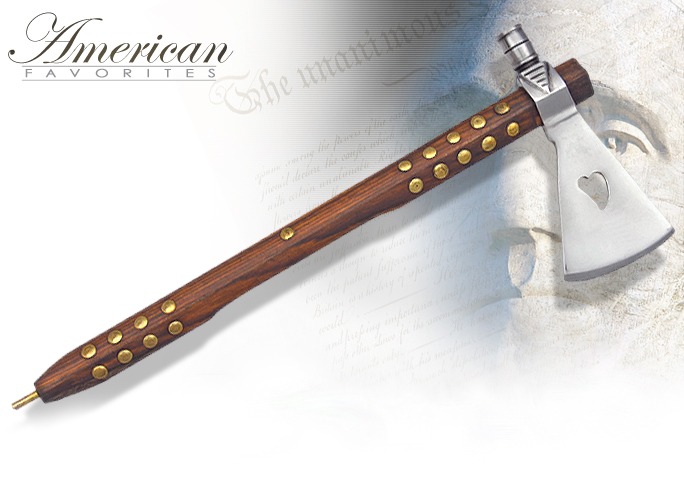FRENCH CHIPPEWA TOMAHAWK PEACE PIPE REPLICA 30-200 30-200
The design of this hawk traces its origins to a Ceremonial French Chippewa Tomahawk Peace Pipe of early colonial America. The hatchet head features bowl with a blade edge that is factory dull for safe handling and display. Replicating the original, the brass mouth stem is hallowed and is secured into its tunneled wooden brass studded handle making an airway to the steel bowl at the opposite end. The handle measures 14 3/4 inches overall, and is adorned with brass colored studs on all four of its carved sides. Bring back the flavor of the past. Treasure the sacred traditions of the past. This is a perfect display piece with any Native American or Revolutionary War collection. Ready to display in your home or office. |
|
 • Overall Length: 18 1/4“
• Overall Length: 18 1/4“
• Historically accurate
• Functional Pipe replicates original
• Steel Hatchet Head
• Hatchet measures 5 3/4" x 2 1/2"
• Blade comes factory dull
• Weight: 9.4 oz |
 |
| The Chippewa- The largest and most important tribe north of Mexico, numbering some 30,000 souls, about equally divided between the United States and Canada. The popular name is a corruption of Ojibwa, a name of uncertain etymology, but generally supposed to refer to the "puckered up" appearance of the seam along the front of the tribal moccasin. They call themselves Anishinabag, "original men", and on account of having formerly had their principal residence at Sault Sainte Marie, at the outlet of Lake Superior, they were known to the French as Saulteurs. |
 |
 |
 |
|
|
Ceremonial smoking
Ceremonial smoking
marked the activities of many indigenous peoples of America - rallying forces for warfare, trading goods and hostages, ritual dancing, and medicine ceremonies. Bowls, stems, and tobacco were stored in animal-skin pouches or in bundles with other sacred objects. Ashes were disposed of only in special places. Ornamental pipes were often valued possessions buried with the dead. There were as many variations in pipe design as there were makers. |
 |
 |
 |
|